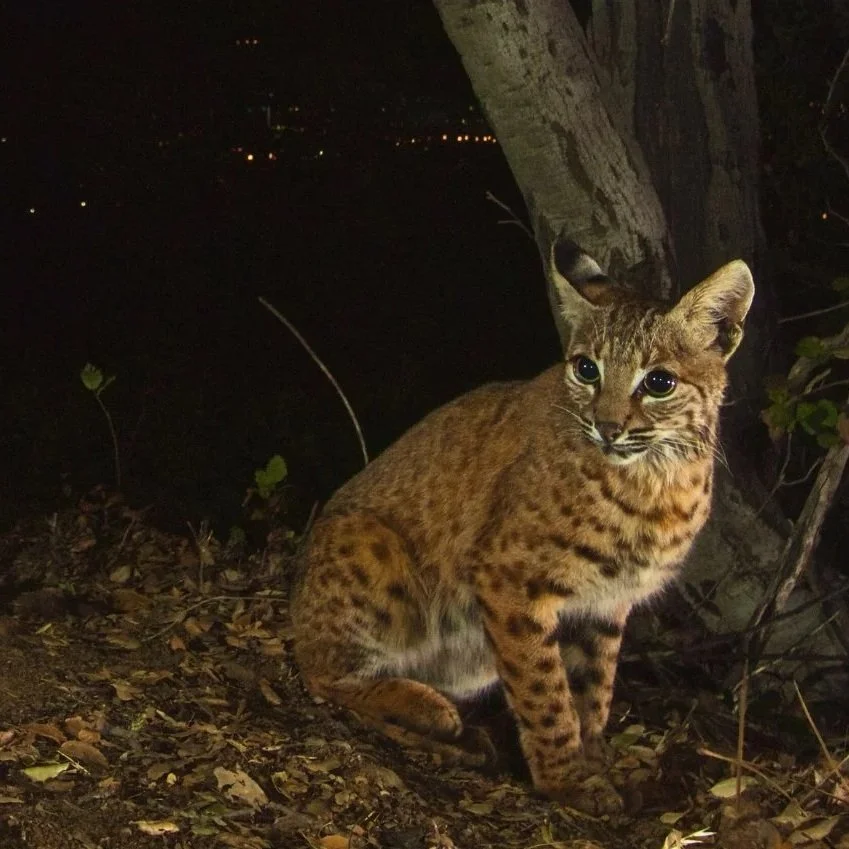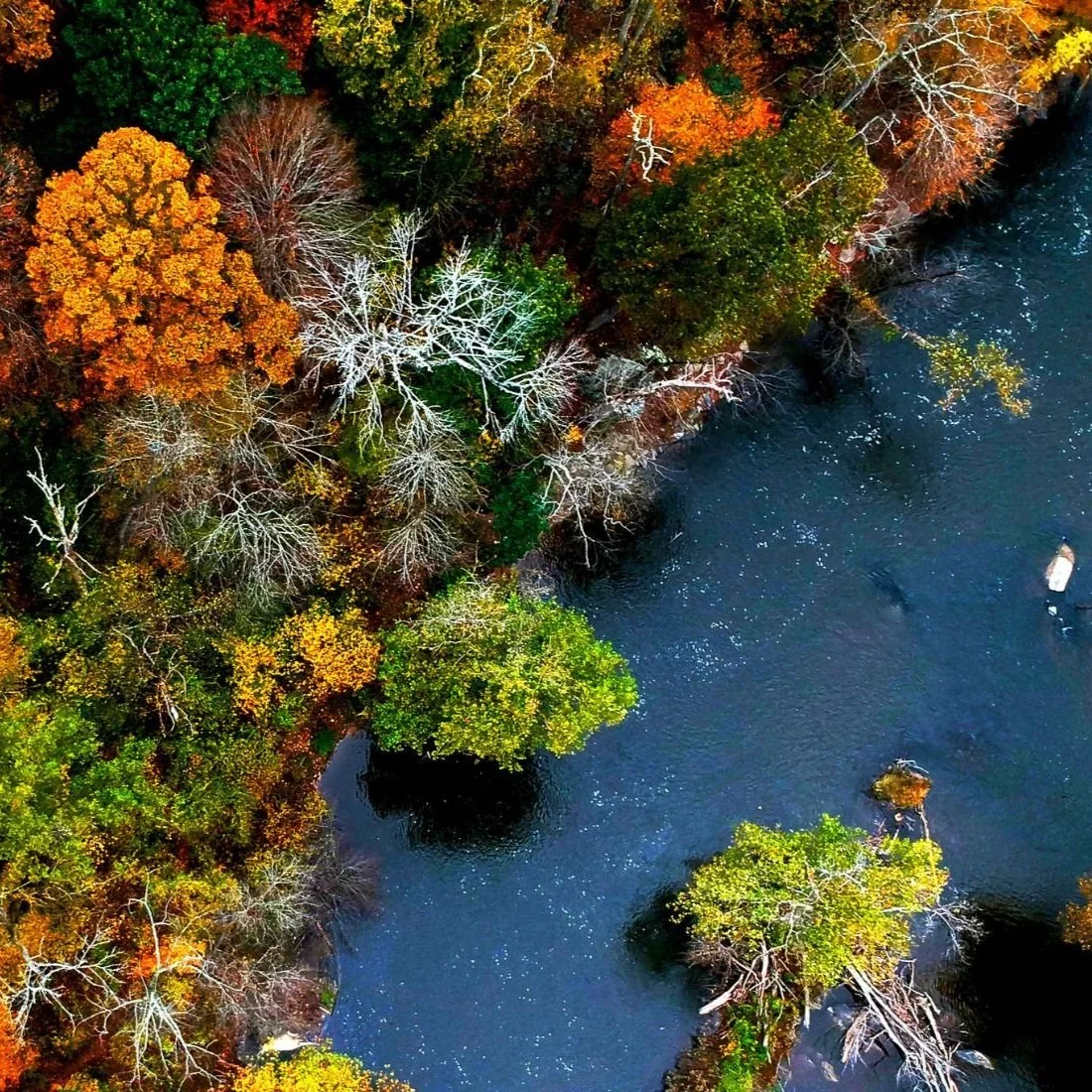“Trick or treat” with 6 creepy critters from the Potomac River
/Discover spooky local animals (and why you shouldn’t really fear them!)
photo Courtesy of Tibor Nagy
The Potomac River’s ecologically rich habitat is home to over a thousand species of animals, and some of the coolest ones around are also the creepiest.
This Halloween, conquer your fears by discovering why they’re not (so) scary after all.
Eastern worm snake (Carphophis amoenus amoenus)
photo credit: Brian Gratwicke
TRICK: Don’t let this worm-like creature fool you. It’s actually a snake! In fact, this little guy actually eats the earthworms it resembles (as well as grubs and other soft-bodied larvae and insects). It has somewhat fearsome features, sharp teeth and a pointy tip at the end of its tail.
TREAT: These non-venomous snakes are not a threat at all to humans. In fact, they are quite shy and spend most of their time burrowed under soil and leaf litter (they’re “fossorial” snakes). It would actually be quite a treat to spot one!
Indiana bat (Myotis sodalis)
photo credit: USWS, Andrew King
TRICK: They may not be blood-sucking vampires, but walking into a dark cave or mine-shaft to find a colony of up to 50,000 bats is pretty creepy. What’s scarier is that the Indiana bat has been endangered since 1967. Initially their population declined due to human disturbance of hibernating bats in their winter caves. Today, the species - which is found throughout the eastern United States - are further threatened by commercialization of their caves, loss of their wooded summer habitat, pesticides and water contaminants, and white nose syndrome.
TREAT: How teeny-tiny are Indiana Bats? On average, they weigh only one-quarter of an ounce, or the weight of three pennies! Even better, since the only treats they’re interested in are insects, we can thank these critters for helping to keep the mosquito population under control.
Bold jumper (Phidippus audax)
photo credit: Tibor Nagy
TRICK: Great. Jumping spiders not only exist, but they also have to be named BOLD?! Why in the name of arachnophobia do these guys have to jump? Okay, this is more of an acrobatic trick, but these eight-legged friends jump to capture their prey. If one happens to land on you by mistake, don’t worry. A bite will only mildly irritate a human. If you’re worried about the prospect of bold jumpers using your house like their personal trampoline, check for and block holes or major access points through which a spider could slide.
TREAT: Once you realize that the bold jumper is non-aggressive and not a threat, you’ll realize that it’s pretty cool to look at (as well as being free pest-control). It’s orange and iridescent teal markings make it an excellent photography subject!
Atlantic Sturgeon (Acipenser oxyrinchus oxyrinchus)
photo credit: Mauro orlando
TRICK: There are not too many creatures that can say they outlived the DINOSAURS, but sturgeons are one of them. Mother Nature’s ultimate magic trick! Despite looking like a frail skeleton with whiskers, these fish have staying power. They were swimming in our oceans over 85 million years ago and still do today. Sadly, our Darwinian heroes do not receive the respect they deserve. Due to overfishing and pollution in the Chesapeake Bay, sturgeons are endangered, meaning less of them are swimming upstream to the Potomac River to spawn.
TREAT: But wait! Are sturgeons returning to our waters decades after disappearing? While none have been spotted in the Potomac yet, sturgeons have recently been making a bit of a comeback in other Chesapeake Bay tributaries. They’ve been spawning and successfully reproducing in the James River, the Pamunkey River, and Marshyhope Creek on the Nanticoke River. Spread the word about their conservation and soon this 170-million year old species may be back in our hometown river!
Eastern Copperhead (Agkistrodon contortrix)
photo credit: cHARLIe 2112(^
TRICK: Walking through the woods on a summer day requires extra focus to make sure you do not accidentally crush a “Death Adder” underfoot. Thank goodness copperheads have begun hibernation! They hide themselves away to sleep from October until early March. But, when active, these guys are social, climb trees, swim, and blend in with their surroundings. They are venemous. Yes, that’s terrifying. But these guys (and our region’s other venemous snake, the Timber rattlesnake) are more scared of you than you are of them, so with a little extra caution, you’ll be safe. Here’s what to do if you encounter them on a hike.
TREAT: Though the fact that copperheads are skilled hunters is a bit frightening, what makes them such precise predators is quite cool. Like the other snakes in the “pit viper” group, copperheads have heat sensory pits on either side of their head, between their eye and nostril, that allow them to detect minute temperature differences in their surroundings. That means that they can accurately strike a prey animal just by sensing its body heat.
Bull Shark (Carcharhinus leucas)
photo credit: ume-y
TRICK: Yes, their are sharks in the Potomac River! As their name suggests, bull sharks are big and quite aggressive. Just last year, a fisherman caught a 310-pound, 8.6 foot long bull in the river. Bull sharks are unique in that, though they live mostly in saltwater, they can tolerate freshwater. Females actually prefer to lay their young in fresh water habitats so will swim up into bays and rivers to do so before returning to the ocean to hunt larger prey (such as large fish, dolphins, crustaceans, turtles, and even other sharks.) If you happen to encounter one (and that’s a big IF), they do give a warning before attacking with a definitive head-butt, so if you’re a duck, it’s time to fly!
Though you should definitely exercise caution around bull sharks, remember that humans pose a much greater threat to sharks than they do to us through hunting and water pollution. These guys stay near the mouth of the river and have never been reported bothering anyone in the Potomac River or Chesapeake Bay. While they’ve never killed anyone in our waters, quite a few have been caught and killed in fishermen’s nets.
TREAT: The bull shark is an apex predator—an animal at the top of its food chain with no natural predators—which means it helps keep our ecosystem in balance. Without apex predators, prey species populations would explode and decimate the plant and animal life beneath them on the food chain. So let’s all thank the bull shark for keeping our waters biodiverse, wildlife diseases under control, and regulating our ecosystem!





















